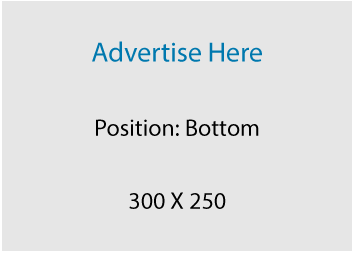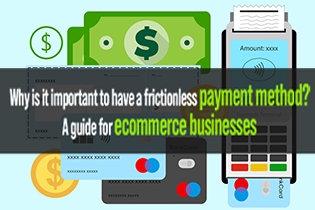
Consistent sales are crucial to maintaining revenues for business, and for deploying the right strategies for further growth. Moreover, maintaining the sales pipeline efficiently reduces time and effort spent on unnecessary/ less productive tasks.
Sales pipeline refers to the set of different stages that a prospective lead moves through, from entering as a lead and progressing to a customer. Each company will have its own structure for the sales pipeline, but the underlying framework and the principles remain the same. For example, in any sales pipeline, it’s only when each pipeline stage is completed, that the prospect is moved to the next stage.
Efficient sales pipeline management usually separates great sales teams from the rest. It is not only about faster results, but also about lesser wasteful expenditure of organizational results. This is corroborated in a Harvard Business Review study that shows an astounding 15% difference in growth between companies with effective sales pipeline management, and those without.

Here are seven ways to increase your sales with effective sales pipeline management:
1. Clearly Define Your Mission and Goals
The first step is also the most important as it will help in determining the success of the rest of the pipeline. Sales teams should be made aware of the fundamentals such as what to sell, whom to sell, and how to sell - these may seem self-explanatory but the order of priorities and the organizational processes have to be standardized. Then, the definite goals have to be figured out for individual members, both activity goals and results goals.
Activity goals would include number of sales prospects calls per day, number of proposals sent out, etc. Results goals would be the results achieved viz., total sales, different product/ service sales, etc. Every single salesperson in the team should be made aware of these goals, and guided in how they can be achieved.
2. Systematic Lead Generation
Organizations attract and gather leads through a number of marketing strategies and campaigns. The goal is to generate the maximum number of leads that the business can serve, not just today but in the future as well. For example, if you expect to grow your sales team in the near future, you should plan accordingly to have enough leads for all of them. To be systematic about lead generation, sales teams must start with specific targets for the number of leads you would require in the pipeline at any given point in time. This will drive your marketing strategies and meetings to secure the targeted number of leads. Getting leads is not always easy or straightforward, but it is important as it drives leads to the pipeline.
3. Define the Sales Cycle
Sales cycle is the average amount of time between meeting a prospective client and deal closure. It depends on the industry, the type of business, etc. But each step in the sales cycle has to be measured so that there is a benchmark for every deal. When the sales cycle is longer, the chances of a successful closure are less. Measurement of each step also helps in recognizing the most effective strategies at every stage. Sales strategies will also have to be evolved and updated to shorten the sales cycle. Another added advantage is that you will be able to identify the reasons for deals to close, and ensure that you can avoid such mistakes in the future.
4. Target the Right Prospect
One of the most effective ways to strengthen your sales pipeline is to focus on deals that are most likely to close. So the priority is on quality rather than quantity, which will show better results. This will accelerate the entire sales pipeline. Again, with constant measurement and analysis of the sales pipeline, you can identify your ideal prospects and the best channels to source your leads from. Studying your competitors, and their most successful customers can help you chart out the right companies and decision-makers.
5. Research
Sales teams have to invest their time in research about the deals and the prospects they are targeting. When you understand the prospects priorities, you can carry them along the sales pipeline faster. Salespeople should understand their prospects’ challenges and goals very well, even if they have to question them directly to get their answers. Listening to your existing customers and talking to prospective customers is very important. Before talking to the prospect it would be very helpful to understand the budget, identify the decision-makers, understand their timeline, etc.

6. Give Each Deal Its Due
Every lead in the pipeline is an opportunity to close a deal and it is important for salespeople to treat it as such. Organizations should have a process to organize and follow-up with each individual lead, such as automated reminders after a regular period, or with regularly scheduled email campaigns to keep the conversation open.
Every inquiry from the prospect has to be responded to quickly. Customer relationship management tools should be leveraged to track the movement of each deal and to spot cold deals that can be immediately moved up the pipeline with stronger efforts. These processes will also help sales teams recognize the most relevant leads to pursue that will lead to closure.

7. Be Ready for Objections
When pursuing leads through the sales pipeline, it is important to note the common objections that they have. This will help salespeople prepare with clear responses that will persuade them. Usually, objections such as saying they are too busy, or that they are in the middle of a project, are common. It is up to the salesperson to respond in such a way that it grabs and holds the prospects’ interest. For example, they can be given an offer of a discount for a limited period. For other objections, an effective strategy would acknowledge the objections but reframe it positively, with a solution for the same.
CONCLUSION:
The sales pipeline is a major component of all businesses. Its importance cannot be overstated for the sustained success of business operations. Without an effective sales pipeline management, businesses will lose potential customers and lucrative deals. So you can use the seven ways we have described above to ensure that your sales pipeline is organized, effective, with shorter sales cycles, and faster growth for your business.








